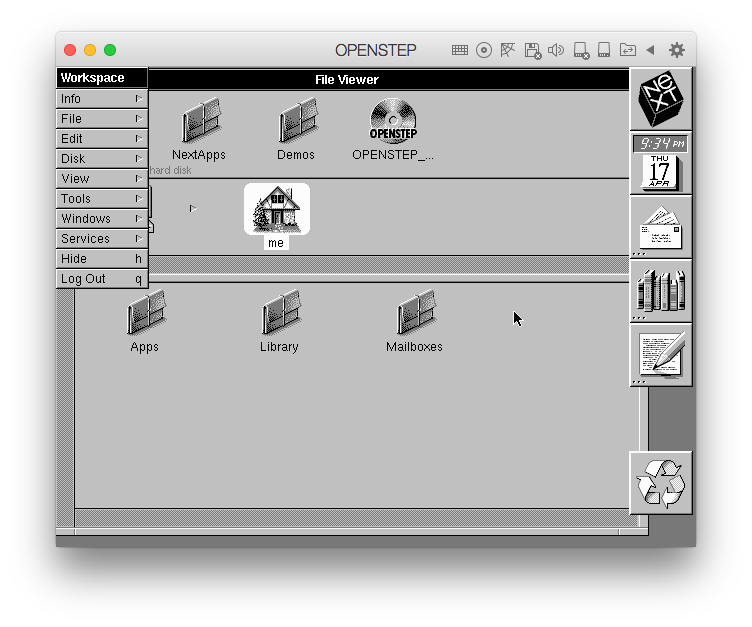I’ll be setting my system up on a Windows machine, but you could just as easily set it up on a macOS or Linux machine. When I first attempted this install, I used VMware Workstation 14 Pro for Windows. After going through most of the installation process I couldn’t get OpenStep in to a color screen mode no matter how much I tried. I eventually found out that VMware Workstation doesn’t support the proper VESA display modes, and try as you might you’ll get an error on boot that says “VESA Mode Not Supported.” Fortunately, Virtual Box – which is cross-platform between Windows, macOS, and Linux and completely free – does support the proper VESA mode and works great for the installation of OpenStep.



To begin, you need a copy of the NeXTSTEP installation CD (in this case for Intel based computers) and the boot and devices floppies (if yours are damages, you can find replacements here). For SPARCstations, you only need the installation CD, and a CD-ROM drive (with SCSI ID# 6). Place the CD in the drive and start up your SPARCstation. Welcome screen in Rhapsody DR2. The screenshot has an extra border. The installation of Rhapsody is virtually identical to that of OPENSTEP. It starts with text-only installation, then proceeds to text environment in graphics mode, and later proceeds to black and white GUI.
Openstep Installation Guide Installation
Still, there are some quirks when setting up your VirtualBox VM initially. The VM must have 1 processor with 1 core, 64MB of RAM, and a 2.0GB hard disk on an IDE controller. You will need to configure one IDE CD-ROM drive and one floppy drive. The hard drive must be at IDE 0:0 (Primary Master), and the CD-ROM drive must be at IDE 0:1 (Primary Slave). You will have to edit the properties of the VM upon creation to ensure you adhere to these standards. All other default options of the VM during the creation wizard can be left alone.